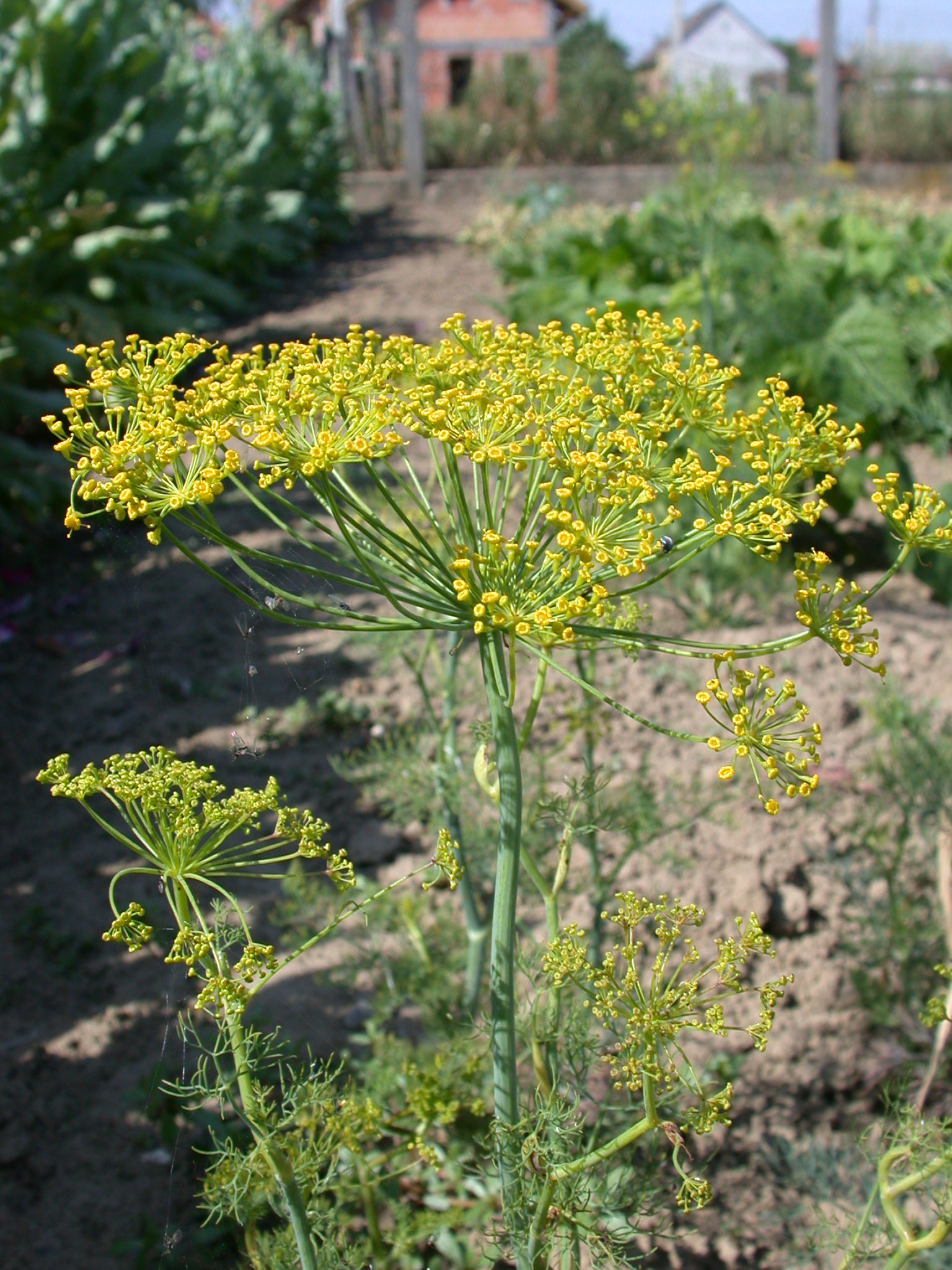Anethum graveolens L. – Dill

Anethum graveolens is a short-lived annual herbaceous plant in the Apiaceae family (Th). The plant is 40-150 cm tall, the leaves are alternate, finely divided, softly delicate, thread like. The flowers are yellow, located in small compound umbels (2–9 cm). The flowering time lasts from May to July. The seeds are 4–5 mm long and 1 mm thick, straight to slightly curved. Thousand seed weight: 1-2 g, cultivars with both small and big seed size are known. The fruit ripening lasts for a few weeks.
Dill originates from the Eastern coast of the Mediterranean Sea, native to West Asia, Persia, East India, Caucasus and Egypt. In Hungary, it is cultivated, but doesn’t occur widely. The germination of the seeds starts in low temperature (at 8-10 °C), but needs warm, sunny weather in the generative phases of plant development. Dill prefers soils with high water holding capacity and warming potential.
Almost all the organs of dill are used: the overground parts of the plant, before the stems have grown, are cut and consumed freshly or dried (Anethi herba). The ripe fruits of the plant are used as an important spice (Anethi fructus). Essential oil is distilled from the overground parts and the ripe fruits of dill: Anethi herbae aetheroleum (dill herb oil) and Anethi fructus aetheroleum (dill seed oil).
Every organ of the plant contains essential oil in different amounts (the overground parts: 0.8-1.6 %, the mature fruits: 2-4 %). The main volatile compound of the oil is d-carvone. The herb oil contains 25-35 % carvone, while the seed oil accumulates it in a higher amount: 40-60 %. D-(I)-phellandrene (about 20 % in the herb oil) and d-limonene (10-40 % in the seed oil) are also remarkable constituents. The fruits contain flavonoids (kaempferol), dillapiole and fatty oils (15-20 %) too.
The herb and the essential oil of the plant has a pleasant flavour, both are used as spice or preservative in the food-industry and in the household. The volatile oil of dill is an important material for cosmetic industry, too. The fruits can be used as a carminative and have bacteriostatic effect, while water extract of the overground parts has a sedative effect. The seed oil has analgesic activity too; dill can be used for curing flu, because of its immunstimulant and antiviral effect.

